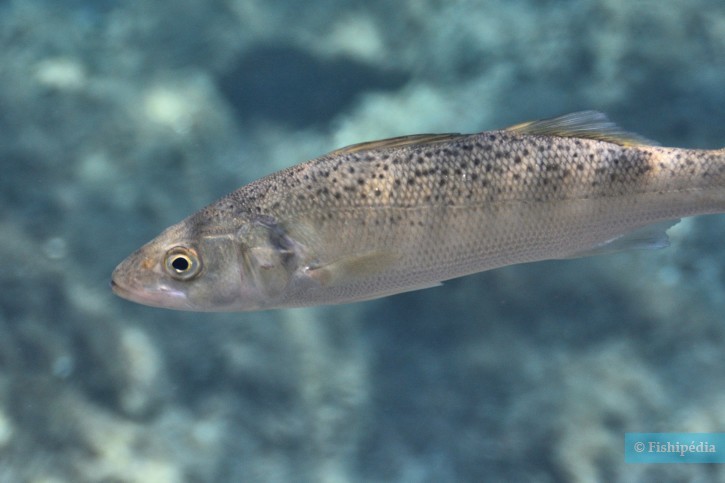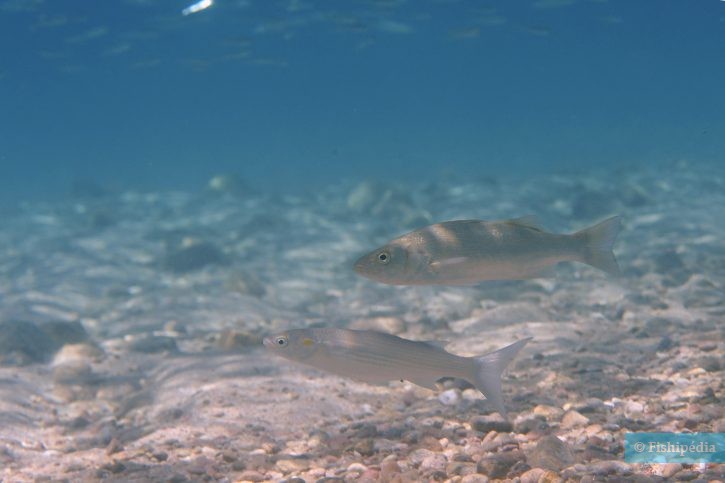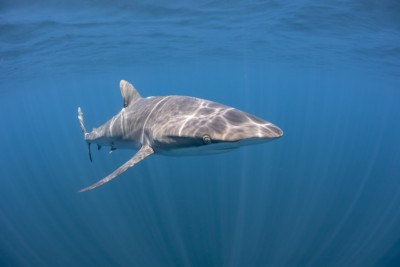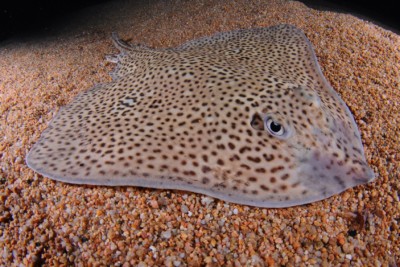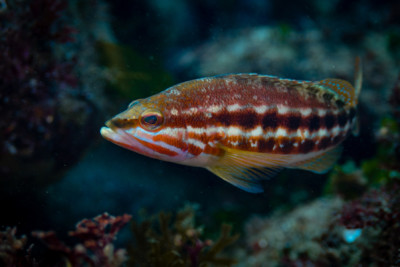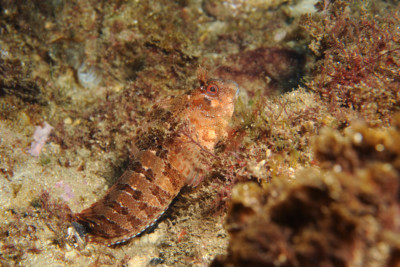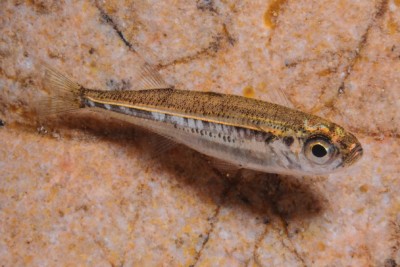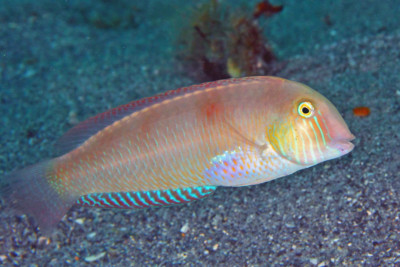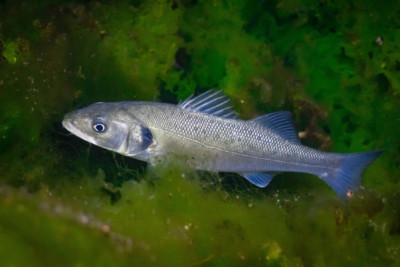spotted seabass
| Scientific name | Dicentrarchus punctatus |
|---|---|
| Descriptor | Bloch |
| Year of description | 1792 |
| IUCN category (World) | LC |
| Family | Moronidae |
| Genus | Dicentrarchus |
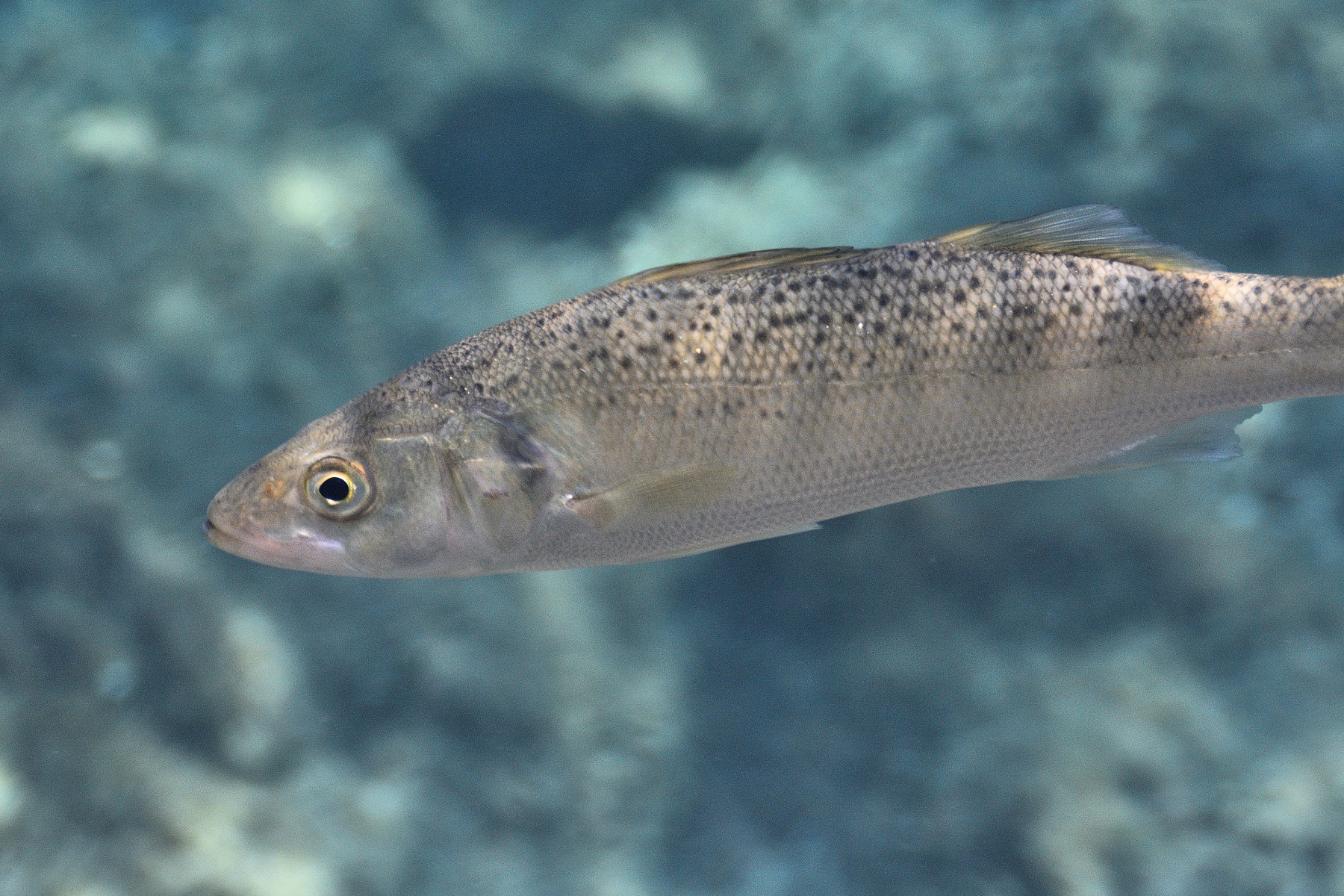

Introduction
Dicentrarchus punctatus, commonly known as spotted seabass, is a species of the Moronidae family. It is mainly found along the Atlantic coasts and in the Mediterranean Sea. Populations have also been reported in the Gulf of Suez.
This poorly understood species is subject to certain fishing regulations, especially regarding the minimum size of catches.
The spotted seabass is not directly sensitive to heat, adapting to the cold waters of the English Channel as well as the warmer waters of the Mediterranean. However, studies have shown that increased CO2 levels in the waters disrupt its olfactory abilities, increasing its difficulty in feeding. Acidification of the Mediterranean could therefore have significant consequences on the populations.
Who is it?
Genus Dicentrarchus
The species of the genus Dicentrarchus are commonly called "european seabass" or "sea bass." They belong to the family moronidae. There are currently two species related to this genus: Dicentrarchus labrax (european seabass) and Dicentrarchus punctatus (spotted seabass).
European seabass are medium to large-sized fish (40 to 70 centimeters), with a fusiform body, slightly compressed on the sides. The largest specimens reach 1 meter in length and 15 kilograms in weight.
They are silvery or spotted, always in shades of gray. They are often found in schools in rocky areas in shallow coastal waters (less than 100 meters).
They are predators with a broad head and like to hide in currents to ambush their prey. They have two dorsal fins, the first of which has spines that can surprise fishermen. The pectoral fins are long and pointed. Three spines are present on the anal fin.
These species are frequently consumed, and their population is declining.
Morphology
-
Average size30 cm
-
Maximum size70 cm
-
ShapeOval
-
Patterntasks
-
Average size30 cm
-
Maximum size70 cm
-
ShapeOval
-
Patterntasks
How to recognize This fish ?
The spotted seabass is an elongated fish with a silvery color. The back and tail tend towards a darker gray while the flanks lighten as you approach the belly.
It can easily be distinguished from the common seabass because it is covered with distinctive dark spots on the back and flanks. It also has a black spot on the operculum.
Like its congeners, it has two dorsal fins, the first with about ten spines, while the second has only one. The anal fin has three spines and about ten soft rays.
Sexual dimorphism
Males and females are not easily distinguishable.
Behaviour & Life cycle
-
dietcarnivorous
-
Sociabilityliving in a group or alone
-
territorialNo
-
Way of livingdiurnal
Seabass are fast and active fish, with a gregarious tendency.
Juveniles live near the coasts, in shallow waters. As they grow, they frequent rugged bottoms made of rocks, pebbles, and sand, moving away from the coasts. These environments provide hiding places and favorable hunting grounds.
These fish are exclusively carnivorous. In open waters, they prey on fish and cephalopods, while near the coast, they target small shrimp, mollusks, and other smaller fish.
Reproduction
Gonochoristic, their fertilization is external. Spotted seabass reproduce once a year. The season begins in August in warmer waters and can extend over several months as you move towards colder waters.
Spawning occurs in winter from December to March and is staggered in the Atlantic and colder seas. The water temperature should be between 12 and 14°C.
Harmless species
Origin and distribution

Geographic distribution & Conservation
Dicentrarchus punctatus is mainly found in the waters of the Eastern Atlantic Ocean, from the English Channel to Senegal. It is also present at the Canary Islands. It can be encountered along the coasts of the Mediterranean Sea and in the Gulf of Suez.
Conservation status of populations (IUCN)
What is its habitat?
Natural environment characteristics
-
Depth0 - 30 m
Biotope presentation
This species is pelagic. It frequents coastal areas, especially rocky areas with sandy bottoms. It prefers areas where the water is lively and oxygenated. It is generally found at depths less than 100 meters.
It is sometimes seen in estuaries.
Species of the same biotope
To go further
Sources & Contributions
Participation & Validation
The Fishipedia team and specialist contributors are committed to providing high-quality content. However, although the information comes from scientific sources or testimonials from specialists, the cards may contain inaccuracies.

Silvia Gomez

Benoit Chartrer
Translation
Translation done with the valuable contribution of our translators, who make this information available to a wider audience. We sincerely thank them for their commitment.
Scientific partners
Tags
#Moronidae
#Dicentrarchus
#fonds sablonneux
#herbier
#platier
#zones côtières troubles
#zones d'algues et de détritus végétaux
#Mediterranean Sea
#Temperate Eastern Atlantic Ocean
#Océan Atlantique Est Afrique - Transition & Cap Vert
#Eastern tropical Atlantic Ocean
#Canary Islands
#Sardinia
#Sicily
Same genus
Species of the same biotope
